Net Zero – can we get there?
- Matt Chambers
- December 14 2023
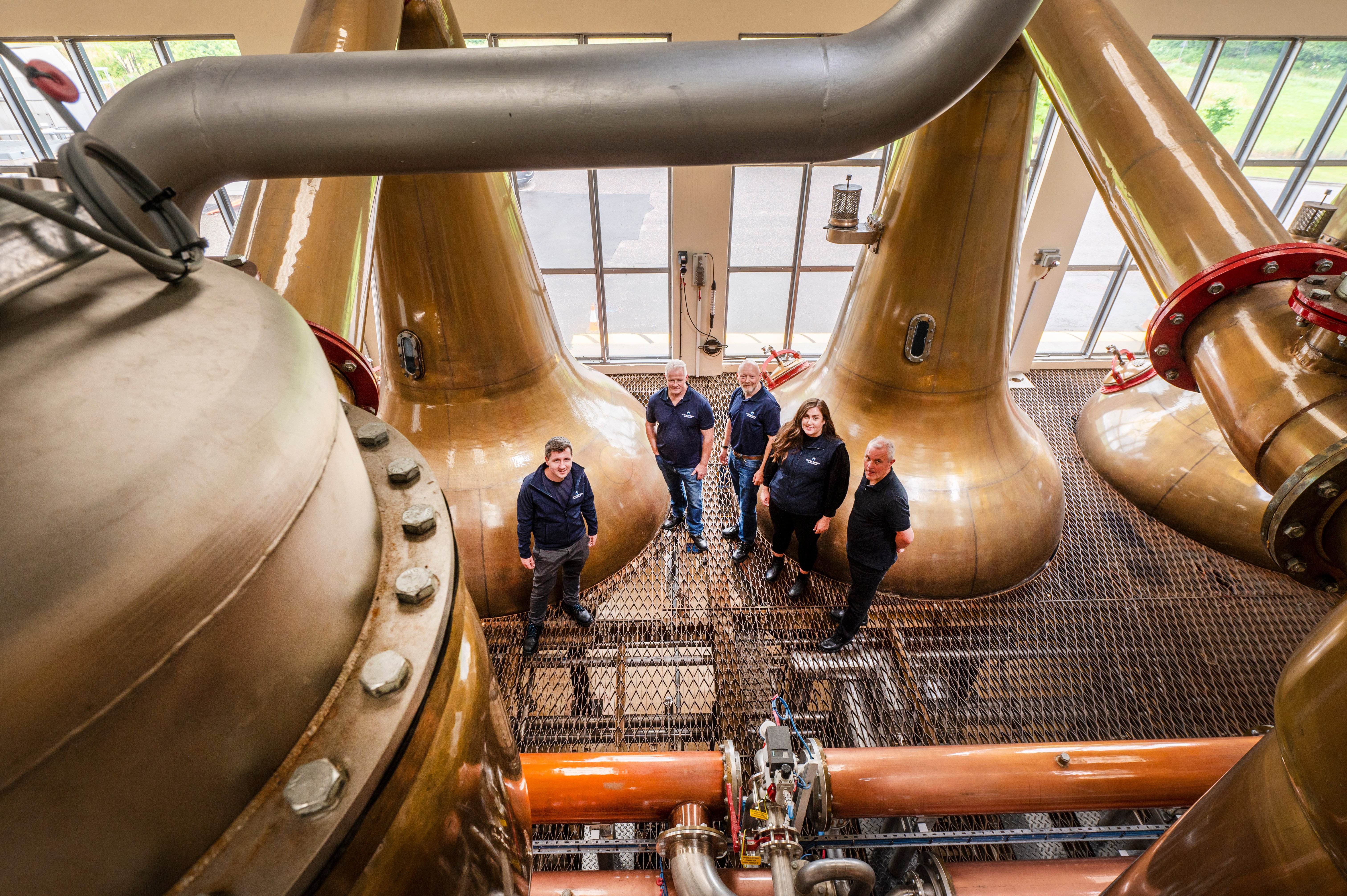
Matt Chambers Looks at how Scotch Whisky distilleries are working towards net zero
Many of the processes within the Scotch Whisky industry are traditionally not eco-friendly or carbon neutral – mashing, fermentation, distillation, chill filtration, burning peat and glass production to name a few. All involve the production of heat, which in an ever-warming world is a key challenge for producers. But things are changing, and companies are finding innovative new ways of working to tackle the issues and move towards becoming net zero.
But what is net zero? How is it defined? Net zero refers to the balance between greenhouse gases, such as carbon dioxide, that are produced and put into the atmosphere versus those that are removed from it. When what is added is equal to what is taken away, then net zero is achieved.
Why is achieving net zero so important? Greenhouse gas emissions from human activity are sending the planet we live on towards irreversible climate change. The world’s major governments, leaders and scientists are of the consensus that carbon dioxide emissions must be halved by 2030 and net zero achieved by 2050 to avoid this.
The 2021 Glasgow Climate Pact was signed by all governments attending the COP26 conference in November 2021. This was seen as a significant step towards kickstarting the reform, with countries potentially fined for failing to meet deadlines and agreed limits.
World governments have set incremental targets for businesses and offered direction to hit them and reduce carbon footprints. Financial incentives, such as tax rebates, have also been given. For example, the UK Government has written in law a commitment to reduce emissions by 78 per cent by 2035 – this will be the equivalent of carbon dioxide levels in 1990.
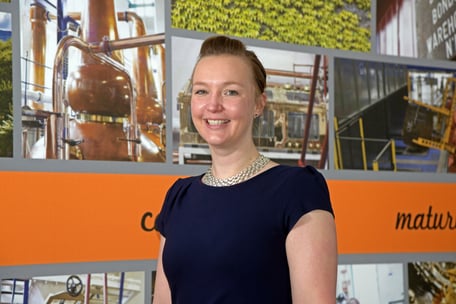 How is the Scotch Whisky industry tackling climate change to ensure the continued and sustainable future for Scotland’s national drink? “Our industry-wide sustainability strategy ensures the whole sector is aligned on ambitious targets,” says Ruth Piggin, Director of Industry Sustainability at the Scotch Whisky Association (SWA). “This involves reducing carbon emissions and ensuring water is used efficiently, caring for the land, and playing our part in moving towards a circular economy. The industry is focused on delivering this strategy and working with other sectors to drive down emissions.”
How is the Scotch Whisky industry tackling climate change to ensure the continued and sustainable future for Scotland’s national drink? “Our industry-wide sustainability strategy ensures the whole sector is aligned on ambitious targets,” says Ruth Piggin, Director of Industry Sustainability at the Scotch Whisky Association (SWA). “This involves reducing carbon emissions and ensuring water is used efficiently, caring for the land, and playing our part in moving towards a circular economy. The industry is focused on delivering this strategy and working with other sectors to drive down emissions.”
Every year a staggering 40 billion glass bottles are manufactured worldwide for use by spirits companies. This generates 22 million tonnes of carbon emissions. These figures bring into sharp focus the need for a dramatic reduction.
Several Scotch Whisky brands have already developed more eco-friendly packaging to help minimise their carbon footprints. But they are not alone, as other spirits brands look to push the boundaries of what is possible by using paper or plant-based bottles – for example, Pernod Ricard-owned Absolut vodka has trialled a paper version of its iconic bottle while Cognac producer A de Fussigny has developed a bottle made from flax.
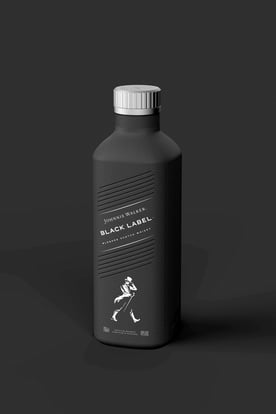 The trend in Scotch Whisky was started by Diageo, which launched a limited-edition paper bottle for its popular Johnnie Walker Black Label expression in 2020. This was thought to be the world’s first ever plastic-free, paper-based spirits bottle and was made from sustainably sourced wood pulp.
The trend in Scotch Whisky was started by Diageo, which launched a limited-edition paper bottle for its popular Johnnie Walker Black Label expression in 2020. This was thought to be the world’s first ever plastic-free, paper-based spirits bottle and was made from sustainably sourced wood pulp.
Recently, numerous other brands have launched permanent new packaging for core range products. Most notable of these are the Islay-based pair of Bruichladdich and Laphroaig, plus Chivas Brothers’ luxury blended Scotch Royal Salute. In July, Bruichladdich, which was also the first Scottish whisky distillery to receive a B-Corp accreditation in 2020, revealed a new bottle for The Classic Laddie. The concept behind the refreshed design was to significantly reduce the brand’s carbon footprint, be eco-friendlier and more sustainable.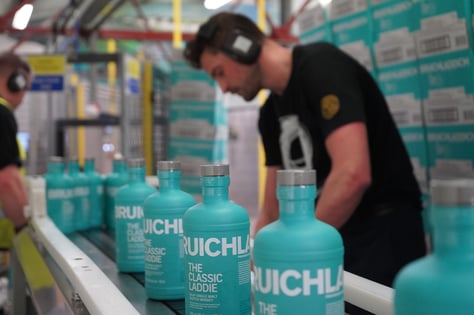
The new bottle contains at least 60 per cent recycled glass, is 32 per cent lighter than the previous incarnation and will no longer be presented in a secondary metal tin. It also features organic ink and a stopper made from polypropylene; a synthetic resin made from bio-based sources. In combination, these moves will reduce the packaging’s CO2 emissions by 65 per cent. Douglas Taylor, CEO of Bruichladdich Distillery, said: “As an industry, we’ve become accustomed to believing that single malt Scotch Whisky must come with outer packaging as standard. Where most other spirits travel around the world in just the bottle, the majority of single malts have an elaborate or heavy secondary, outer pack. And it made us ask ourselves, why? Secondary packaging is not always necessary, and it’s certainly
not sustainable.”
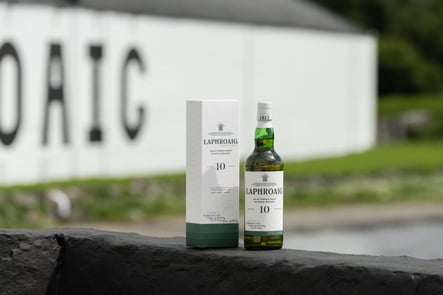 August saw Beam Suntory announce a similar development for its Laphroaig 10 years old bottling. The major redesign will see the iconic green bottle, white label and black writing remain but with a 30 per cent reduction in carbon footprint. It will aid the brand’s move towards 100 per cent recycled packaging by 2030. The changes are estimated to reduce greenhouse gases by 1,185 tonnes per year. Chivas Brothers has also recently changed the bottle of its Royal Salute core blends to coated glass so that it can now be more recyclable.
August saw Beam Suntory announce a similar development for its Laphroaig 10 years old bottling. The major redesign will see the iconic green bottle, white label and black writing remain but with a 30 per cent reduction in carbon footprint. It will aid the brand’s move towards 100 per cent recycled packaging by 2030. The changes are estimated to reduce greenhouse gases by 1,185 tonnes per year. Chivas Brothers has also recently changed the bottle of its Royal Salute core blends to coated glass so that it can now be more recyclable.
But what if your business is designing and producing glassware? “As a family-run business we are committed to delivering a long-term sustainability strategy to meet the climate demands of the future,” says Paul Davidson, the Managing Director at Glencairn Crystal. “We work hard to source responsibly and the premium bottles, decanters and glasses that we produce are designed to last for life. They are rarely, if ever, thrown away by the recipients. We are proud that we have created an entire product portfolio that is not destined for landfill.”
Each example points to the fact that alternate packaging is the future, rather than a trendy fad. More customers are demanding and expecting eco-friendly, recyclable and carbon neutral products. A recent study, The Future of Spirits by Really Good Culture, showed
56 per cent of consumers saw their perception of a brand influenced by its sustainability practices and 69 per cent would pay more for products that were ethically better for the environment.
But while developing alternate packaging may be seen as an obvious quick fix to the carbon issue, other wider-reaching schemes and projects have been under way across the Scotch Whisky industry for some time.
Late last year, Beam Suntory began the second phase of a partnership with the Royal Society for the Protection of Birds (RSPB ) that aims to restore peatland and bogs in Scotland. Peat bogs are one of the most carbon-rich environments on the planet and one of the most efficient at removing and storing it. The company provided £385,000 ($US435,000) to aid conservation at Airds Moss Reserve in Ayrshire.
The production of Scotch Whisky accounts for just 1 per cent of Scotland’s peat usage but Beam Suntory acknowledges the importance of sustaining peat and making a positive impact on the environment. Ultimately, the action will contribute to the continued sustainability of the peatlands and peated Scotch Whisky.
The partnership forms part of Beam Suntory’s commitment to the conservation and restoration of 1,300 hectares (3,210 acres) of peatland across Scotland by 2030. This is the same amount that the company takes each year to produce its famous peated Islay single malts of Bowmore and Laphroaig. A wider goal to double this by 2040 is also in place.
The first phase saw conservation work begin in late 2021 on peatlands at Knockandy Hill near their Ardmore distillery in Aberdeenshire. The joint project will see Beam Suntory and the RSPB provide total funding in the region of £3.5 million ($US4 million).
It follows the establishment of water sanctuaries by the company in Japan and the USA.
“It is rewarding to be using our knowledge and expertise to make a significant impact to Scotland’s ecosystems,” says Alistair Longwell, Head of Distillation and Environment at Beam Suntory. “Working across the Airds Moss Reserve in partnership with the RSPB represents a great step forward in our goal to restore thousands of hectares of peatland by 2030.”
More recently, Whyte & Mackay has announced a partnership with Carbon Capture Scotland. This will see one million tonnes of biogenic carbon dioxide, which is created by organic processes such as fermentation, removed from their distilleries – Dalmore, Fettercairn, Jura and Tamnavulin – per year. That equates to removing 700,000 cars from the road.
The initiative forms part of Carbon Capture Scotland’s UK-wide initiative to remove biogenic carbon and utilise it within alternative businesses. This will be done using specialist equipment fitted at the distilleries of the Glasgow-based whisky company.
“We have been impressed by Whyte & Mackay’s sustainability programme and it fits well with our own efforts for Scotland to reach net zero,” says Richard Nimmons, founder and Managing Director of Carbon Capture Scotland, “and working with Whyte & Mackay allows us to capture sustainable CO2 for other customers and to begin our carbon removal efforts.”
Each of the major whisky companies is dutifully tackling the net zero issue in its own way. But they are not always ploughing a lone furrow. Chivas Brothers has taken the step to share best practice and innovative new heat recovery technology with the rest of the industry to aid acceleration of the journey towards net zero targets. This allows rival distillers to benefit from their findings.
The company has more than halved carbon emissions at its Glentauchers distillery in Speyside through the installation of advanced heat recovery technologies, including Mechanical Vapour Recompression (MVR) and Thermo Vapour Recompression (TVR). These are designed to capture and recycle heat generated in the distillation process that would otherwise go to waste. This has also reduced the energy consumption at the distillery by almost half, which represents an energy saving equivalent to powering 4,979 average UK homes for a year. Several ‘open house’ days are planned at Glentauchers in early November that will enable other distillers to see the technology in action for themselves.
While the technology may not be suitable for every distillery in Scotland, Chivas Brothers estimates that if the majority follow through then it would be a significant step to achieving net zero. A figure of approximately 1,750 Gwh (Gigawatt hours – a unit of energy that represents one-billion-watt hours) would be saved per year – enough to power 605,000 average UK homes in the same period.
“Heat recovery forms a critical part of our commitment to achieve our ambition of carbon neutral distillation by 2026,” says Jean-Etienne Gourgues, the Chairman and CEO of Chivas Brothers. “Collaboration across our industry will be fundamental if we are to meet collective ambitions around sustainability, safeguarding the long-term future of our product and our planet.”
The push for net zero and better sustainability shows no signs of slowing down and nor should it. As the planet continues to burn, flood and choke at unprecedented levels it is vitally important that everyone and every industry across the globe plays its part. Scotch Whisky is no different and is looking to be pushing boundaries at the forefront of what is possible.
The final word goes to the SWA’s Ruth Piggin – “This is challenging, but it is a challenge that simply must be met.”
This article first appeared in the winter 2023 issue of The Keeper magazine
Leave your thought here
Your email address will not be published. Required fields are marked *